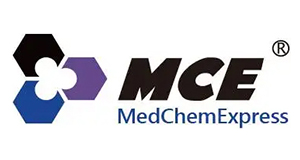Lipopolysaccharides, from E. coli O128:B12
Lipopolysaccharides, from E. coli O128:B12
SKU
MEXHY-D1056A4-10
Packaging Unit
10 mg
Manufacturer
MedChemExpress
Availability:
loading...
Price is loading...
Product Description: Lipopolysaccharides, from E. coli O128:B12 is commonly used to stimulate the inflammatory pathway in an infection/inflammation induced preterm animal model. Specific Lipopolysaccharides from E. coli serotypes induce activation of different inflammatory pathways in the neonatal rat brain. Compared with other Escherichia coli, Lipopolysaccharides (O111:B4, O55:B5, O127:B8), Lipopolysaccharides, from E. coli O128:B12 has lower induction efficiency of inflammation. Cub survival rate was 100% after the treatment[1][2][3][4].
Formula: N/A
References: [1]Kabanov DS, et al. Structural analysis of lipopolysaccharides from Gram-negative bacteria. Biochemistry (Mosc). 2010 Apr;75(4):383-404./[2]Cai KC, et al. Age and sex differences in immune response following LPS treatment in mice. Brain Behav Immun. 2016 Nov;58:327-337./[3]Heinrichs DE, et al. Molecular basis for structural diversity in the core regions of the lipopolysaccharides of Escherichia coli and Salmonella enterica. Mol Microbiol. 1998 Oct;30(2):221-32./[4]Ying Liu, et al. Podocyte-Released Migrasomes in Urine Serve as an Indicator for Early Podocyte Injury. Kidney Dis (Basel). 2020 Nov;6(6):422-433.
Molecular Weight: N/A
Research Area: Inflammation/Immunology
Target: Toll-like Receptor (TLR)
Formula: N/A
References: [1]Kabanov DS, et al. Structural analysis of lipopolysaccharides from Gram-negative bacteria. Biochemistry (Mosc). 2010 Apr;75(4):383-404./[2]Cai KC, et al. Age and sex differences in immune response following LPS treatment in mice. Brain Behav Immun. 2016 Nov;58:327-337./[3]Heinrichs DE, et al. Molecular basis for structural diversity in the core regions of the lipopolysaccharides of Escherichia coli and Salmonella enterica. Mol Microbiol. 1998 Oct;30(2):221-32./[4]Ying Liu, et al. Podocyte-Released Migrasomes in Urine Serve as an Indicator for Early Podocyte Injury. Kidney Dis (Basel). 2020 Nov;6(6):422-433.
Molecular Weight: N/A
Research Area: Inflammation/Immunology
Target: Toll-like Receptor (TLR)
| SKU | MEXHY-D1056A4-10 |
|---|---|
| Manufacturer | MedChemExpress |
| Manufacturer SKU | HY-D1056A4-10 |
| Package Unit | 10 mg |
| Quantity Unit | STK |
| Product information (PDF) | Download |
| MSDS (PDF) |
|

 Deutsch
Deutsch










